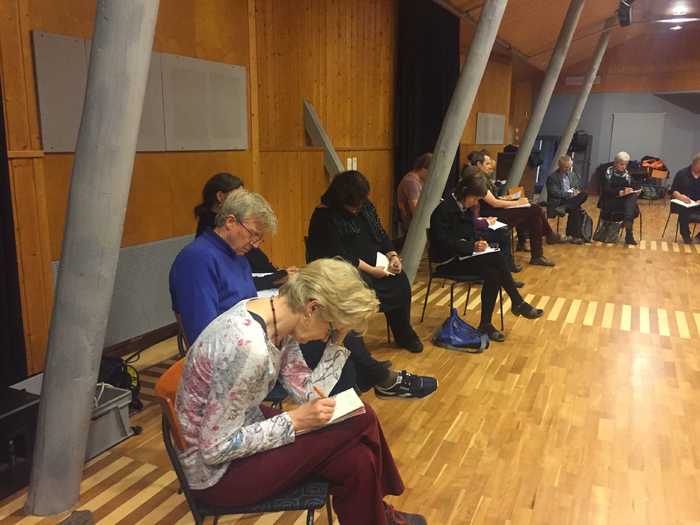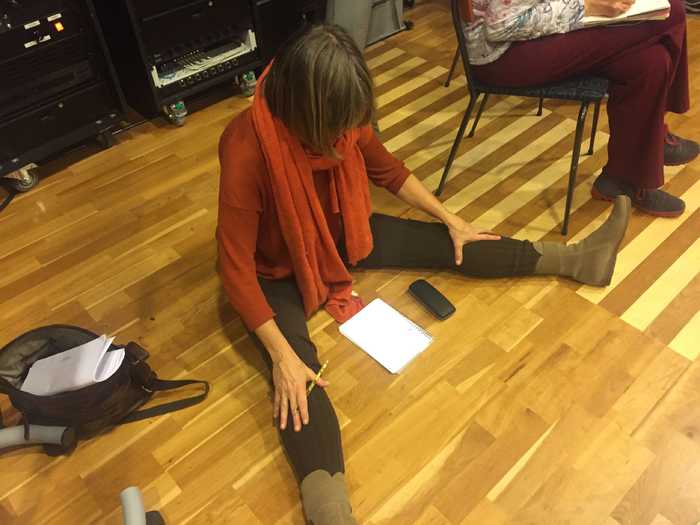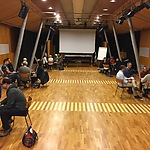jamming the questions
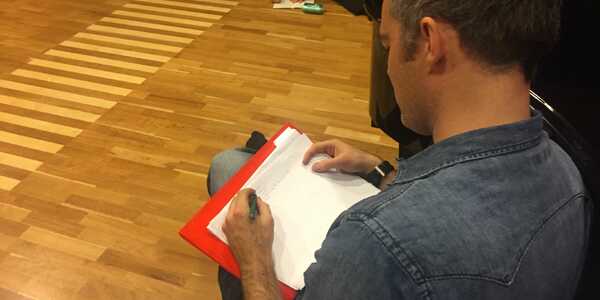
14.00 Jamming the questions
First part is about jamming the questions. I like that title better than my original one. It is not the art of questioning but more ‘jamming with questions’. We all start formulating a question we’d like to work on. During the session we will ‘play with them’ in words, in a free improvised format of short conversations. And at certain moments the questions will meet each other as if in counterpoint. Making sense or non-sense like in improvisation. ‘Jamming the questions’
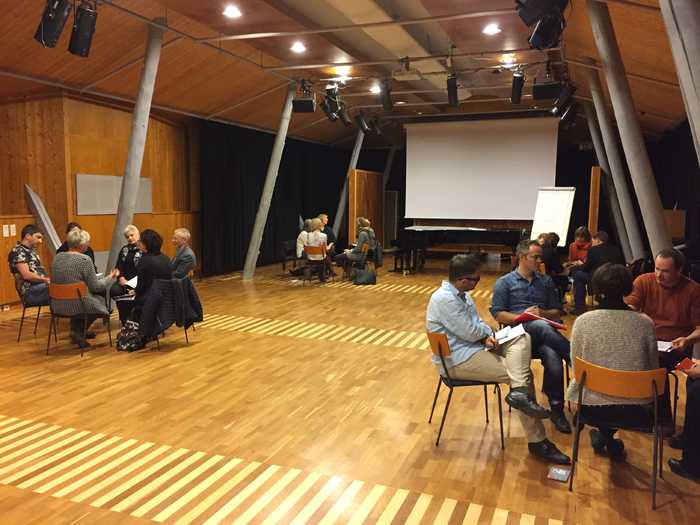
I- To begin with I ask you to formulate a question coming from your practice. See it like this: one way or the other you work with improvisation as a teacher as an artist. You want it to grow, to bring it further. 1- This might be for yourself. Where do you want it to go? About your own attitude, learning process, approach 2- It might be as a teacher. Maybe you want to maximalize unblocking your students, or let increase curiosity, maybe you want to reach certain goals and want to use improvisation on that path. 3- It could however also be about the topic of improvisation in your institution. Maybe you think about creating a group of teachers, start a project, find or create a better place in the curriculum?
Sit for a few minutes and write down some thoughts. What is it that you want to work on the coming hour? End these thoughts with writing a question. This means trying to write a coherent sentence, a line: How can I…. what can I do….what possibilities might help me with….
So: you are in the question yourself……It is not about addressing something outside yourself but always something in connection with yourself.
..
..
..
Did you all have by now a question in a sentence of lets say ten words??
II- Now I ask you. I am looking for six volunteers that say OK I will bring my question as a starting point for conversation and exchange. You, as volunteers, will ‘host’ one of these six places in the room for three rounds of 10 minute conversation. the others will choose a different spot to visit every round. Creating maximum diversity. They do not stay as a group but spread all the time. Find your starting places.
..
..
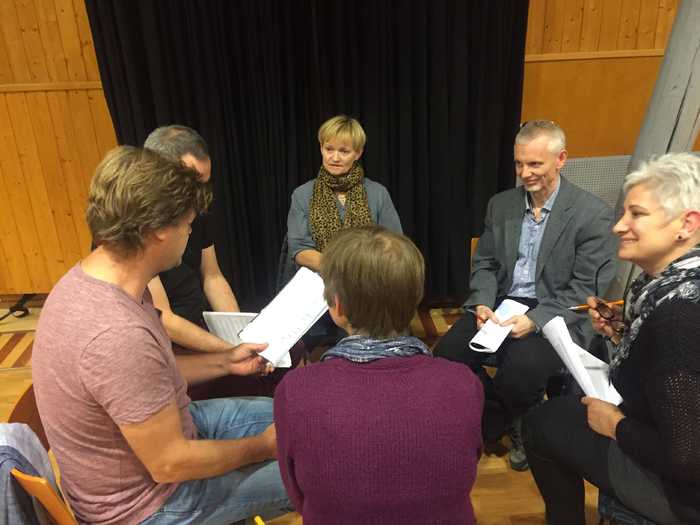
III- The 10’ conversation part goes like this:
a. The host starts reading his or her question. And than starts to explain, why this question, what is he urgency, what is the context. This might be followed by a few questions from the others to deepen the understanding. But not too much. It is not intervision or coaching.
b. Than the guests start to say what resonates from the question. What do you (as a guest) experience as meaningful? What association comes up? What strikes you in the question and explanation? Stay away with tips, tricks and fixits like ‘do this…’! A conversation unfolds. After a while the guests might ask the host whether he or she has maybe a follow up question to ask coming up from the conversation.
c. After 10’ there’s a sudden turning point. Guests go back to their own question, the question they started to write down in the very beginning. And they say the following to the host: ‘may I now give you as an answer to your question my own question. Than they read their own question. Maybe adding one sentence explanation. This turning point is about allowing unexpected sounds to come in….Like in an improvisation it might make sense it might be strange……
d. Than follows a silence. Each one of us asks him- or herself the question: what do I get out of this. What does it say to me? The conversation that unfolded? The series of questions of others?
15.00 Theatrical Dialogue
Now we move to a different set of exercises starting with the body. It is a chain of small tasks one following the other moving between theatrical gestures and imaginative writing. I use it as a teacher in improvisation courses as well as in groups of non-art-related professionals (people in the care, in accountancy, police) to deepen group dynamics. Recently I actually worked with this with the groups of starting masterstudents art education and a new master that is called crossover creativity at HKU.
The dialogue
It starts with improvising a dialogue with simple theatrical gestures in duo’s. We will do a first short round of 3’. Than the two partners of each duo exchange what was remarkable, what stays in memory, how it felt and so on for another 3’. Than a second round of gestures with a different duo-partner follows. It is interesting to explore what it does to you and your body-language now being with another partner. This duo is also followed by a short exchange.
The writing
Than a new task is given: ‘Take one moment, one specific image you made with your partner, or a short sequence of two, maybe three. Not more. Stay with a specific moment. Start writing a short narrative coming from and exploring this moment. With a narrative I mean that you can allow your fantasy coming in. Maybe the personages have different names. Maybe the place were it all happens is not the cowshed but somewhere else. Maybe there’s a sudden jump in time to a childhood story or whatsoever. Let this fantasy flow freely. Explore the deeper layers of the chosen moments through writing. When the individual writing is over we form small groups of three duo’s to read the texts’.
Reading and exploring values
In the small groups one of a duo is invited to start reading. His or her partner will follow. Than another one starts again followed by the duo partner. After reading the texts in groups the duo’s sit together to help each other exploring the texts that were written. ‘How and were do you recognize important qualities in life in what you have written? Can you find ‘values’ that are meaningful to you as a person? All kind of qualities might be there from playfulness to caretaking, from giving attention to doing interventions. Help each other to unravel these qualities’. Finally we might exchange some thoughts and observations in a bigger group.
The experience of this chain of tasks can be strong. Participants might not immediately know how and where to ‘place’ it. Therefore I sometimes conclude by telling again what we did and how it might have felt and worked.
I talk about four aspects:
1- The quick entrance in improvisation through the body and the writing. For me it is helpful to leave the instrument for a while. This is not about how well I play or what I can do or cannot do on the instrument. This is about everything that is there by itself. It helps demystifying improvisation and natural playfulness. And encouraging those qualities. Remarkable for me is the flow that usually is immediately there. Forgetting about the others and being totally in the dialogue. The body seems to know more than we think. It’s surprising to see that what seems strange when explained feels rather natural when doing. Also the richness of expression. Deeper feelings and expressive acts are brought to the floor quit easily. And the experience of doing this with different partners. What we might experience is that ‘the other’ has a very strong influence on what ‘I’ express. This dialogue is very much about ‘receiving’.
2- The turn from being on the floor into the writing of a narrative. How it feels to start from a concrete experience. The search for meaning, for words. And the moment you find something and start writing and how this usually rather quickly unfolds. It finds its clue and comes together.
3- The experience of the polyphony of voices, styles and forms when we read it to each other. Usually it is surprising to see how different and rich the gathering of stories can be. The feeling of a strong shared creative potential.
4- The last remark is about ‘identity’. The chain of exercises makes us aware how strongly we as human beings express our human qualities and values. This ‘map’ of who we are is rooted in our body and in our fantasy, our stories. This is how we succeed in being here, communicate and connect.
